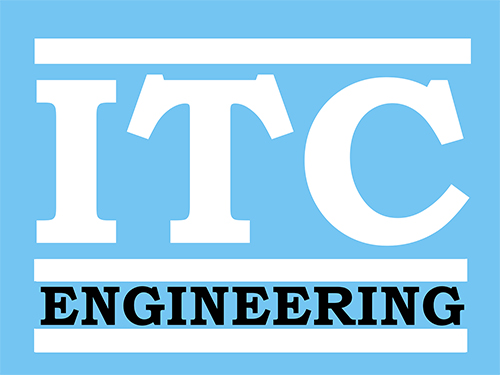Comprehensive Guide to Product Reliability Testing
Welcome to our comprehensive guide on product reliability testing! As a manufacturer, you understand the importance of delivering high-quality and dependable products to your customers. After all, a reliable product not only enhances customer satisfaction but also builds trust in your brand.
In today’s competitive market, where consumers have numerous options at their fingertips, ensuring that your products are reliable is crucial for success. This is where product reliability testing comes into play. By subjecting your products to rigorous testing procedures, you can identify any potential weaknesses or flaws before they reach the hands of your customers.
In this article, we will delve deep into the world of product reliability testing. We’ll explore its fundamentals and discuss key concepts such as Mean Time Between Failures (MTBF) and Mean Time To Failure (MTTF). So get ready to enhance the quality and dependability of your products through effective reliability testing methods. Let’s dive in!
Understanding Product Reliability
Product reliability is the measure of a product’s ability to perform its intended function consistently and without failure over a specific period of time. It encompasses various factors such as durability, performance, and safety. Understanding product reliability is crucial for manufacturers as it allows them to assess the quality and dependability of their products.
Reliability testing plays a vital role in achieving this understanding. By subjecting products to controlled conditions that simulate real-world usage scenarios, manufacturers can evaluate how well their products withstand stress and potential failures. This testing helps identify design flaws or weaknesses that may lead to malfunctions or breakdowns under normal operating conditions.
One key aspect of understanding product reliability is analyzing data related to failures. Manufacturers collect information on when and why failures occur, allowing them to identify patterns or common issues that need attention during the design or manufacturing process.
Moreover, customer feedback also contributes significantly to understanding product reliability. By actively seeking feedback from customers regarding any issues they encounter with the product’s performance or durability, manufacturers gain valuable insights into areas that may require improvement.
Comprehending product reliability enables manufacturers to make informed decisions about design enhancements, material selection, component sourcing, and production processes. A reliable product not only meets customer expectations but also helps build long-term trust in the brand.
In conclusion (not conclusive), understanding product reliability involves evaluating how well a product performs its intended function consistently over time through rigorous testing methods and analysis of failure data while considering customer feedback for continuous improvement opportunities.
Fundamentals of Reliability Testing
Reliability testing is a crucial step in the product development process. It involves subjecting a product to various tests and conditions to measure its ability to perform consistently over time. By identifying potential weaknesses or failure points, manufacturers can make necessary improvements before releasing their products into the market.
One of the key aspects of reliability testing is understanding the expected lifespan of a product. This can be determined by calculating two important metrics: Mean Time Between Failures (MTBF) and Mean Time To Failure (MTTF). MTBF measures how long a product can operate between failures, while MTTF represents the average time until the first failure occurs.
To conduct reliable testing, manufacturers use various methods such as Highly Accelerated Life Testing (HALT), which subjects products to extreme conditions beyond what they would typically encounter during normal usage. This helps identify potential weak spots early on and allows for timely adjustments.
Additionally, stress testing is often used to assess how well a product performs under excessive loads or harsh environments. This type of testing pushes products beyond their limits to determine where failures may occur.
Another significant aspect of reliability testing is environmental simulation, where products are tested under different temperature, humidity, and vibration conditions that they may encounter during their intended use. By replicating real-world scenarios, manufacturers gain insights into how their products will perform in diverse environments.
Reliability testing provides invaluable information about a product’s performance and durability throughout its lifecycle. Manufacturers who prioritize reliability testing ensure that their customers receive high-quality products that meet their expectations and withstand everyday wear-and-tear.
By investing time and resources into comprehensive reliability testing processes like HALT, stress-testing, and environmental simulation, manufacturers can proactively address potential issues before mass production begins – saving both time and money in the long run.
Mean Time Between Failures (MTBF) and Mean Time To Failure (MTTF)
Product reliability testing is a critical aspect of the manufacturing process. By conducting thorough tests and analyzing data, manufacturers can predict and improve the reliability of their products. This ensures that customers receive high-quality, reliable products that meet their expectations.
One important metric in reliability testing is Mean Time Between Failures (MTBF). MTBF calculates the average time between failures for a product or component. It provides valuable insights into how long a product can be expected to function before experiencing failure.
Another key metric is Mean Time To Failure (MTTF), which measures the average time it takes for a product or component to fail. This information helps manufacturers identify potential weak points in their products and make necessary improvements to enhance reliability.
By understanding MTBF and MTTF, manufacturers can accurately assess the performance and durability of their products. They can also use this data to set realistic warranty periods, plan maintenance schedules, and make informed decisions about design changes or upgrades.
Reliability prediction through comprehensive testing plays an integral role in ensuring customer satisfaction and trust in manufactured products. By investing time and resources into rigorous testing processes like HALT testing, manufacturers can identify weaknesses early on and rectify them before production begins.
By prioritizing product reliability testing throughout the manufacturing cycle, businesses stand to gain significant advantages over competitors who neglect this crucial aspect. The ability to produce durable, dependable products not only enhances customer satisfaction but also strengthens brand reputation in today’s competitive marketplace.
So remember – when it comes to manufacturing reliable products that customers can trust with confidence – robust reliability testing is essential!
